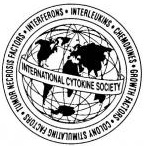Monday, December 27, 2010
The primary goal of our society is to facilitate communication within the cytokine research field. As this field keeps growing, our approaches to this goal need to be continually updated. Our recent efforts to make this website more useful as a means of communication have resulted in the new form presented here. You are encouraged to explore this new site and see what information you can gain from it.
In addition to displaying the previously presented items in a more easily accessible way, we now introduce a new feature – a series of forums dedicated to each of the main groups of cytokines. These forums are aimed at facilitating communication between researchers who share an interest in particular cytokine groups. You will be able to communicate reviews about the advances in your field and manuscripts of recent or upcoming studies, post notes about reagents or experimental techniques that other research groups might find useful, and correspond with peers about issues of common interest. At the time of writing, the pages of these forums are empty (except for one review posted on the TNF forum). We hope that your contributions will soon vitalize them. There is a need for one or two coordinators for each forum from the community of aficionados of that particular cytokine group.
Establishing such forums is in line with a general change in our field. Expansion unavoidably leads to ‘speciation’. As the community of cytokine researchers grows, we inevitably see evolution of sub-communities whose members share interest in specific subgroups of cytokines or unique aspects of their function. One possible way to address this speciation is by planning our yearly conferences to allow certain specific subjects to be more thoroughly discussed, each meeting highlighting one or two subjects that differ from those that dominated previous meetings. At the most recent conference, held in Chicago in October 2010, the intention was to pay special attention to the relevance of cytokine research to cancer. This was reflected in the keynote talks, in two of which – by Richard Flavell, who discussed the function of the inflammasome, and by Roger David, who reviewed the known activities of c-Jun N-terminal kinase – particular care was taken to address the relevance to cancer of the molecules they discussed. It was also reflected in the choice of subjects of several sessions and of the plenary talks. The meeting demonstrated, however, that even when it was planned with a bias, it could still allow comprehensive presentation of the most important advances in the cytokine field at large. The plan was studded with exciting presentations of frontline advances in knowledge of the intricacies of signaling mechanisms that cytokines activate, such as the keynote talk of George Stark, who addressed recent findings on pivotal roles of lysine methylation in the regulation of NF-κB and Stat3 function. Also extensively addressed at the meeting were advances in understanding of the roles of molecular signaling in pathogen/host interactions, the roles of cytokines in inflammation and immunopathology, and cytokine-directed therapy.
The plan of the next yearly conference, to be held in Florence in October 2011, is still to some extent a work in progress. It seems clear, however, that this time too the chairmen will define one or two specific aspects of the cytokine field to which special attention will be given, while care will be taken to present other major advances as well.
A forum for even more thorough discussion of specific facets of the field is our Society’s half-yearly meeting, to be held this year for the second time. The upcoming meeting (May 2011, in Clearwater, Florida, www.clearwater2011.com) will address exciting advances in studies of the IL-1 family, some of which were presented in a special session in the Chicago meeting, organized by Charles Dinarello.
Shortly after the half-yearly meeting on the IL-1 family, a conference dedicated to the TNF family will take place in Awaji Island, Japan (Conference website). Conferences focusing on advances in this particular facet of cytokine research have already become a tradition. This year’s TNF conference will be the 13th in a biennial series, the first of which was held in 1987.
The number of molecules found to act as cytokines keeps on and on increasing. Apart from the many proteins dedicated to serve such functions, we now find that cytokine-like activities are also exerted by various pathogen components (PAMPs) and by many intracellular proteins when released from dead cells at the time of tissue damage (DAMPs/alarmins). The more knowledge we acquire, the more apparent it becomes that this wide variety of inducers affects every cell in our body and all biological functions. This explosion of knowledge will inevitably be accompanied by a growing need to facilitate communication within more restricted facets of the cytokine field, by means of small, specifically directed conferences and other means of sharing information. Nevertheless, there will always remain a need for more general conferences and discussions, where the exchange of knowledge among remote facets of our field will allow cross-fertilization and clarification of the general principles of cytokine function.
David Wallach
The Weizmann Institute, Rehovot, Israel
